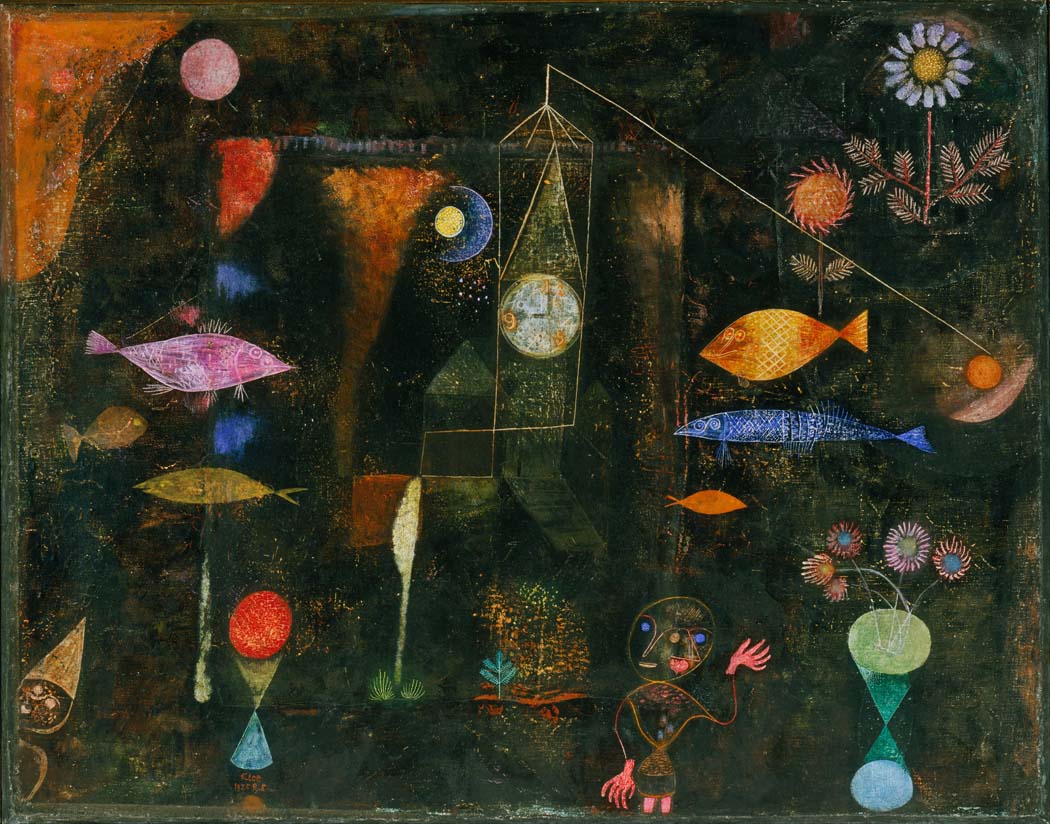
• Depictions of other worlds that are rendered with abstracted shapes
Abstract surrealism covers a wide spectrum from subtle abstraction of imagined scenes to nearly total abstraction, in which the scene is barely recognizable.
An artist might apply minimal abstraction to make the surreal a bit more cartoonish, using outlines, minimal indication of form, and/or flat shapes. An artist might wish to use a certain level of abstraction to remind the viewer of the painting/drawing's artificial nature, creating a buffer that keeps the viewer from full immersion in the imagined world.
An artist might begin with an exploration of their own abstract aesthetics, without consciously depicting a scene. Then, they might look at the abstraction to imagine a world within it. With more or less rendering of that imagined world, the artist could then push the pure abstraction toward abstract surrealism.
Bringing together the surreal with abstraction can be used to great effect for humorous scenes or to provide a tolerable way to experience high drama or horrific scenes. It can also be used by an artist to make clear that the alternate realm being depicted has nothing to do with our usual, three-dimensional reality... that it is something else entirely, or that it is simply make-believe.
Featured: Fish Magic by Paul Klee.